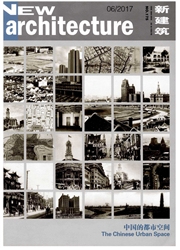

 中文摘要:
中文摘要:
崖墓葬是东汉时期巴蜀地区最普遍一种丧葬习俗,东汉崖墓是巴蜀地区重要的历史文化遗存,其形制、雕刻及装饰都极具特点,具有极高的考古与史学研究价值。郭江崖墓群是全国重点文物保护单位,也是巴蜀地区最集中、最具代表性的崖墓墓葬群之一。墓室中留存的众多精美建筑雕刻,为研究巴蜀地域的东汉建筑形制特征提供了丰富而宝贵的实证资料。在对郪江东汉崖墓实地调研的基础上,对其在分布规律、形制特点、建筑形态特征等方面内容进行了归纳与分析,初略探寻了巴蜀地区的东汉建筑形态特征。
 英文摘要:
英文摘要:
Cliff burying is the most common funeral customs of the Eastern Han Dynasty in the Bashu area. The cliff tombs are important historical and cultural relics in the Bashu area, with highly characteristic shape, carving and decorations, and it is very valuable in archaeological and historical research. Cliff tombs of the Eastern Han Dynasty in Qijiang River is a National Key Cultural Relics Protection Unit, and the cliff tomb group is one of the most concentrated and the most representative one in the Bashu area. Many delicate architectural sculptures in the tomb have been kept, which provides abundant and valuable data for the study of the Eastern Han Dynasty architectural style and characteristics in the Bashu area. Based on the investigation of cliff tombs of the Eastern Han Dynasty in Qijiang River, this paper summarizes and analyzes the characteristics of their distribution, style and form, and preliminarily explores the morphological characteristics of the architecture of Eastern Hart Dynasty in the Bashu area.
 同期刊论文项目
同期刊论文项目
 同项目期刊论文
同项目期刊论文
 期刊信息
期刊信息
